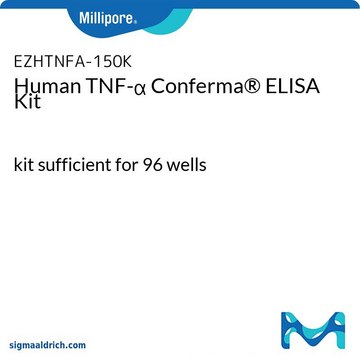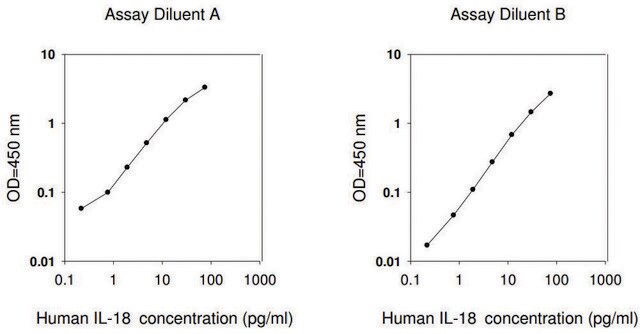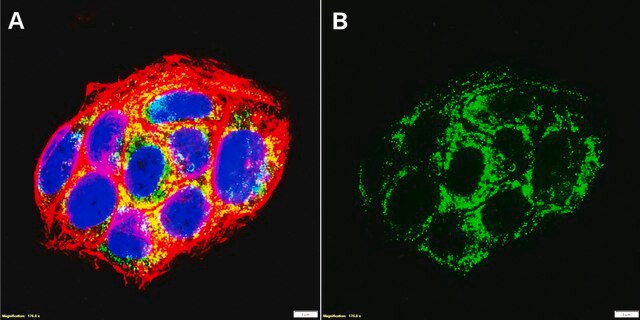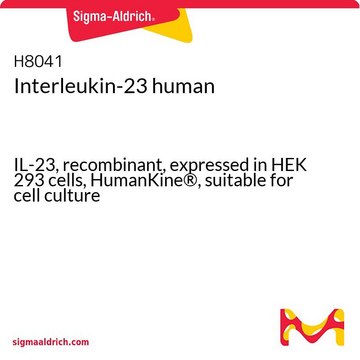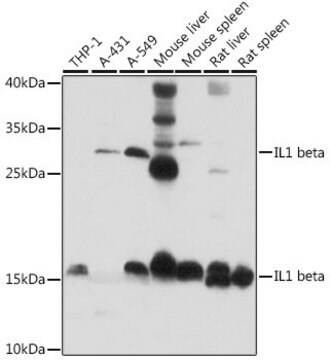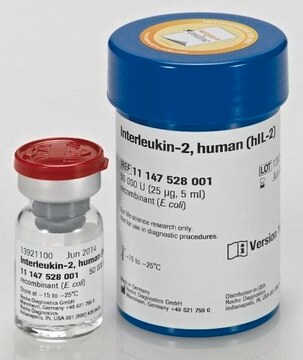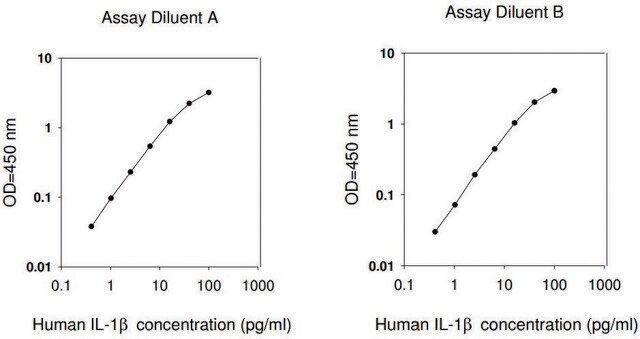RAB0697
Human IL23A / Interleukin-23 Subunit Alpha ELISA Kit
for serum, plasma, cell culture supernatants and urine
Sign Into View Organizational & Contract Pricing
All Photos(1)
About This Item
UNSPSC Code:
41116158
NACRES:
NA.32
Recommended Products
species reactivity
human
packaging
kit of 96 wells (12 strips x 8 wells)
technique(s)
ELISA: suitable
input
sample type cell culture supernatant(s)
sample type serum
sample type plasma
assay range
inter-assay cv: <12%
intra-assay cv: <10%
sensitivity: 25 pg/mL
standard curve range: 28.67-7000 pg/mL
detection method
colorimetric
shipped in
wet ice
storage temp.
−20°C
Gene Information
human ... IL23A(51561)
General description
Interleukin-23 (IL-23) is a pro-inflammatory cytokine. It is mostly synthesized by activated DC (dendritic cells) and macrophages. It is a 20.7 kDa protein that has 189 amino acids. IL-23 is mostly expressed on activated/memory T cells and natural killer (NK) cells. This gene is located on human chromosome 12q13.3.
The IL23A ELISA kit provides for the Quantitative measurement of IL-23 in Cell Culture Supernatants, Plasma and Serum.
Application
For research use only. Not for use in diagnostic procedures.
Please refer to the attached General ELISA KIT Procedure (sandwich, competitive & Indirect ELISA)
Please refer to the attached General ELISA KIT Procedure (sandwich, competitive & Indirect ELISA)
Biochem/physiol Actions
Interleukin-23 (IL-23) plays a major role in cutaneous immune-mediated inflammatory diseases like psoriasis, allergic contact dermatitis and atopic dermatitis. It is involved in cellular immunity driving the expansion, stabilization and survival of Th17 cells.
Other Notes
A sample Certificate of Analysis is available for this product.
Please type the word sample in the text box provided for lot number.
Please type the word sample in the text box provided for lot number.
Signal Word
Warning
Hazard Statements
Precautionary Statements
Hazard Classifications
Met. Corr. 1
Storage Class Code
8A - Combustible corrosive hazardous materials
Flash Point(F)
Not applicable
Flash Point(C)
Not applicable
Choose from one of the most recent versions:
Already Own This Product?
Find documentation for the products that you have recently purchased in the Document Library.
HTLV-1 contains a high CG dinucleotide content and is susceptible to the host antiviral protein ZAP.
Paola Miyazato et al.
Retrovirology, 16(1), 38-38 (2019-12-18)
Human T cell leukaemia virus type 1 (HTLV-1) is a retrovirus associated with human diseases such as adult T-cell leukaemia/lymphoma and HTLV-1 associated myelopathy/tropical spastic paraparesis. In contrast to another human retrovirus, human immunodeficiency virus type 1 (HIV-1), HTLV-1 persists
IL23A (interleukin 23, alpha subunit p19).
Inoue N.
Atlas of Genetics and Cytogenetics in Oncology and Haematology (2011)
Anna Olewicz-Gawlik et al.
International journal of rheumatic diseases, 17(6), 664-670 (2014-01-29)
T cell abnormalities with a focus on Th17 cells have been associated with the pathogenesis of systemic sclerosis (SSc) and interstitial lung disease (ILD). The aim of this study was to evaluate serum levels of interleukin (IL)-17, IL-21 and IL-23
S Dionne et al.
Mucosal immunology, 7(6), 1405-1415 (2014-05-02)
Accumulating evidence implicates defective innate immunity in the pathogenesis of Crohn's disease (CD). Ineffectual NOD2 (nucleotide-binding oligomerization domain 2) is the most common susceptibility gene contributing to CD. Vitamin D (vD), a potent modulator of innate and adaptive immunity, induces
Ho-Jae Lee et al.
Antioxidants (Basel, Switzerland), 9(10) (2020-10-24)
Immune activation associates with the intracellular generation of reactive oxygen species(ROS). To elicit effective immune responses, ROS levels must be balanced. Emerging evidenceshows that ROS-mediated signal transduction can be regulated by selenoproteins such asmethionine sulfoxide reductase B1 (MsrB1). However, how
Our team of scientists has experience in all areas of research including Life Science, Material Science, Chemical Synthesis, Chromatography, Analytical and many others.
Contact Technical Service